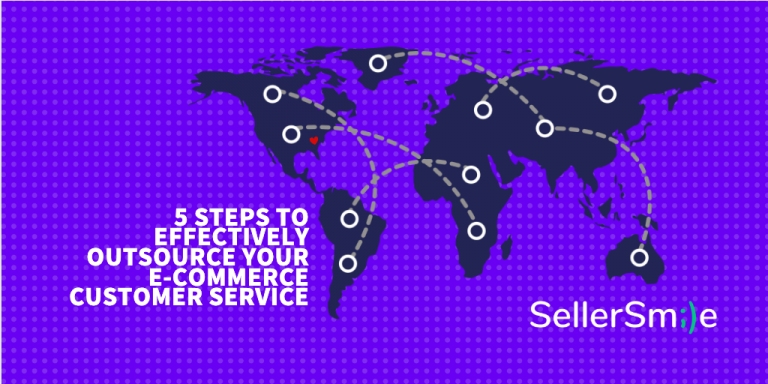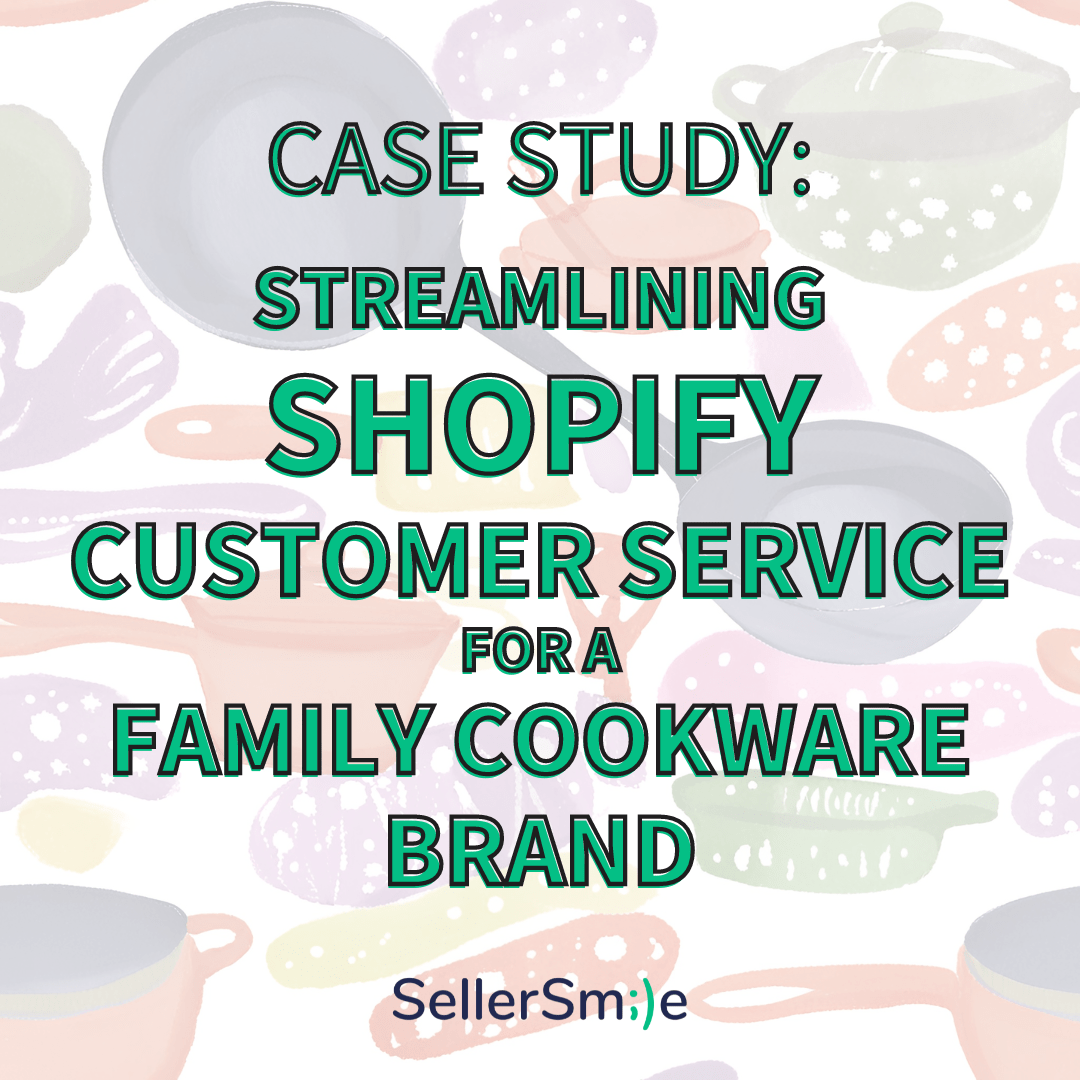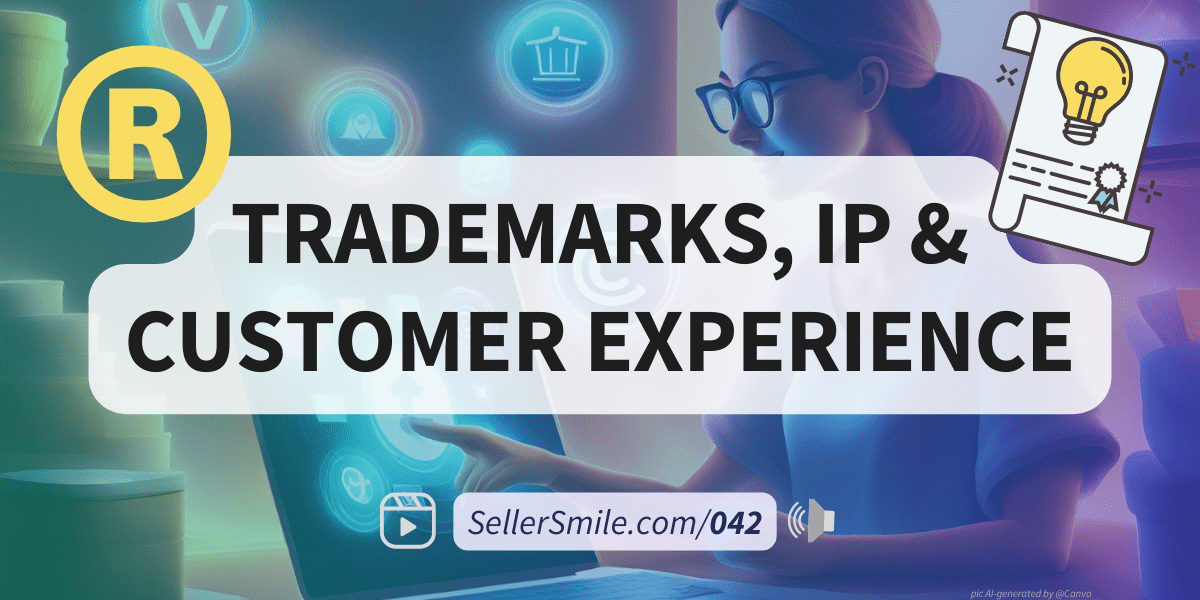Estimated read time: 15 minutes.
E-Commerce and outsourcing
The continued rise of e-commerce in the early 21st century marks an ever-changing shopping experience. The selection of the entire world’s products are increasingly available to anyone with an internet connection, a credit card, and a shipping address.
The demand for greater selection and faster delivery continues to drive the growth of online shopping, though e-commerce represents only ~10% of retail sales in the U.S. in 2018 (Forbes, 2018).
The online shopping phenomenon has spawned a generation of entrepreneurs and brand managers that feed this growing demand.
“SMBs selling on Amazon come from every state in the U.S., and from more than 130 different countries around the world. More than 140,000 SMBs surpassed $100,000 in sales on Amazon in 2017…”
-Jeff Bezos (Amazon Shareholder letter, 2007).
Fulfillment systems like Amazon FBA and software for online stores like Shopify have made it easier than ever for entrepreneurs to launch and build a viable physical products business on a budget. Whether it’s a wholesale or private label model, a major appeal of selling physical products online is the location- and time-independence it offers.
Many sellers run their online stores from the comfort of their homes and/or while on the go, as long as there’s good wifi and strong coffee. Building and managing a small business completely remote is increasingly common.
The co-appeal of the income potential + liberation from the cubicle is enticing, but earning that lifestyle is hard.
E-Commerce businesses take motivated and resourceful individuals to start, and if they’re lucky enough to see success, the volume of work that accompanies that success can quickly take their hard-won freedom away.
When an online store starts to gain momentum, the founder/s can easily become their own bottleneck/s. Instead, they need to take action to reduce the amount of work that needs direct involvement.
The traditional way to offload work is to hire employees, though, depending on the business location, hiring employees can be a significant added expense, the employer must follow certain laws, pay the associated taxes, and sometimes offer health insurance and incentivized retirement plans.
An alternative to hiring employees is to partner with freelancers/ virtual assistants / independent contractors /agencies that match your expectations and your budget. These options have different constraints around compensation and exhibit features that are advantageous to shorter-term periods or one-off projects.
This “gig economy” gives sellers some creative options to offload vital tasks to keep their business moving and growing, winning back the freedom and independence they sought in the first place.
- 78% of businesses from all over the world feel positive about their relationship with their outsourcing company (Deloitte’s 2016 Global Outsourcing Survey).
- Amazon was responsible for 44% of all U.S. e-commerce sales in 2017 (CNBC, 2018).
- E-Commerce is increasing by 23% year-over-year, still, 46% of US small businesses do not have a website (BigCommerce, 2017).
- 51% of Americans prefer online shopping (CMSC Media, 2018).
- 67% of Millennials prefer online shopping than in a store (BigCommerce, 2017).
What is “outsourcing” today?
To someone in the U.S., “outsourcing” might have negative connotations.
The most stereotypical example of outsourcing is moving some aspect of business offshore to a foreign entity that performs that work for a lower cost.
For example, a customer in the U.S. calls the customer support phone number of the U.S.-based company they purchased from, and suddenly, they’re talking with someone sitting at a call center in India or the Philippines, two countries with significant outsourcing economies.
Because of this, some Americans view “outsourcing” as an unsavory business practice. Outsourcing can mean moving jobs away from themselves and their families. Not to mention, the frustration of being connected with someone that doesn’t speak your own language well enough.
On the contrary, we consider outsourcing to be less about taking business out of the United States and more about delegating to an organization that specializes in those specific tasks or business operations.
“[Outsourcing is] The practice of having certain job functions done outside a company instead of having an in-house department or employee handle them; functions can be outsourced to either a company or an individual.”
When we first started our customer service agency, SellerSmile, we had to learn how to describe what we did in a short description; “outsourced customer service” seemed accurate and concise since we’re a company that manages a job function (customer service) for multiple e-commerce sellers that we’re technically outside of.
Recently, our company was looking for help with our bookkeeping and accounting. Instead of hiring someone to do this job, we outsourced those tasks to a domestic accounting agency located 45 minutes from my old apartment in Wisconsin. They’re comprised of dozens of professionals that we can access for a fraction of the cost of a full-time employee.
Customer service is first to be outsourced
- 83% of buyers require some form of assistance when making a purchase online (Social Media Today, 2013).
One of the first tasks that sellers outsource is customer service. The most cited reasons for starting with customer service are:
- Customer service doesn’t take days off, the inquiries a seller receives are constant.
- Customer service tickets are urgent and time-sensitive.
- Customer service is difficult to manage, tickets come from multiple sources.
- Customer service is easier to scale, the process for ticket resolution is repetitive.
Let’s examine these reasons further.
Customer service is constant: outsource it
Amazon sets that expectation that a 3rd party seller must respond to customer inquiries within 24 hours, 365 days per year. While 24 hours isn’t that fast anymore, the speed of your response is one of the best ways to provide an excellent customer experience and win positive product reviews and glowing testimonials.
Since your online store is open 24/7, even on holidays, and perhaps to multiple time zones and countries, providing good customer service for an online store is uniquely challenging.
Compared to brick and mortar stores, a seller can’t simply flip their sign to “closed” and take a break, they need to be available all of the time.
Customer service is multi-channel: outsource it
Running an online store today typically requires that a seller is visible, especially where their customers are. This can mean the various e-commerce platforms like Amazon, eBay, Jet, Overstock, etc., social media platforms like Facebook, Instagram, Pinterest, Twitter, etc. and their own website using an e-commerce platform like Shopify, Magento, or WooCommerce.
This “omni-availability” means that customers will use their preference to contact a seller.
Customer service is urgent: outsource it
If eBay pioneered online retail, Amazon has pioneered the expectation for the speed of the shopping experience, from browsing all the way to customer support after delivery. Prime shipping used to be 2-days, but now it’s down to several hours in many metro locations.
Today, online sellers serve a generation of shoppers with less and less patience. The speed of your customer service must keep pace in order to meet the increasing exceptions of your customers.
71% of buyers expect online support within five minutes (Social Media Today, 2013).
On the contrary, a slow reply does the opposite, it creates a negative customer experience.
To further illustrate this, my fiancé recently placed an order online from a company that does custom poster printing. It was a gift for me. She was excited for me to see it, but when I opened the package for the first time, we discovered the print had a significant error. Disappointed but hopeful, she contacted the company to request a replacement. After seven long days and several emails to their customer service team, still no response. She finally demanded a refund, which was swiftly granted. The amount of time we spent waiting was the worst part. We wanted to know that a fix was in-process! Didn’t they care about us as a customer?
Don’t forget about shoppers too. Before a browser becomes a customer, they might have a question about one of your products which will influence their decision to buy.
If shoppers can chat instantly with a customer support agent and get their question answered while their credit card is out, they’re much more likely to proceed with your store. If it’s several days before they see a reply, they may have already moved on and purchased from your competitor.
Whether it’s converting a warm shopper or resolving an issue for an existing customer, the time it takes for the interaction to be completed will make all the difference for your customer’s experience.
Customer service is repetitive: outsource it.
Since the business manager typically has the most subject matter expertise, that makes them the best person to handle customer inquiries, but at a certain level, that takes them away from other more important tasks that are required to run and grow a business.
The nature of retail is that the same questions will come up repeatedly, and for that reason, the knowledge of the business owner can be documented and transferred; shared to an individual or an agency that can use that knowledge on their behalf.
I used to work at a retail plant nursery and two of the most common questions were, “How much sun does this plant need?” and “How much water does this plant need?” My background wasn’t in horticulture and the answer to these questions was difficult to “Google”, so I didn’t really know what to say at first. After shadowing my boss and supervisors for a few weeks, I became comfortable fielding these questions by reciting a version of how he or she would respond. I could mimic them. When my knowledge increased further, I could customize my response accordingly to give a better answer based on specific aspects of the customer’s knowledge and goal.
Likewise, an online seller or brand owner can transfer their knowledge to others, essentially injecting their expertise into their team so they can be effective elsewhere in the business.
While a seller can proactively mitigate customer questions with well-written documentation, well-designed graphics and product pages, and well-made products, certain types of situations and customers will require support.
Our agency manages customer service for dozens of sellers across a diverse range of products. We’re not experts in any of the product categories, but we don’t need to be. We couple our technical customer service expertise with reliance on comprehensive internal documentation and robust templates that contain the specific subject matter expertise that our team may lack.
In a perfect customer service world, a question should be answered once, and that reply would be saved as a “canned response” to be used next time you receive that same question from the next customer. But we all despise canned responses, so add a little personality and customization to let your customer know you’re not a bot.
Customer Service Tip: When your canned response yields the same repetitive follow-up questions, enhance your templates with additional information that addresses those recurring follow-ups too! You’ll improve your customer service metrics.
How to outsource your e-commerce customer service
If you’ve decided that your online store could benefit from an outsourced customer service team, we recommend following the 5 steps below to avoid wasting time and money.
“If you do build a great experience, customers tell each other about that. Word of mouth is very powerful”.
– Jeff Bezos
#1. Define what you’re looking for
Before you start the process of outsourcing your customer service, stop and brainstorm. Imagine the ideal customer service team. What does it look like and how many people does it take?
Figuring out what you’re looking for in an outsourced solution is critical, and be specific. This step will help you to filter through the options and recognize the ideal candidate when you meet them.
Consider your requirements now and in the future:
- Domestic vs. foreign?
- Phone service?
- Chat?
- E-mail?
- How many days per week?
- A full solution or a single team member?
- What are all of the tasks you need to be done?
- What’s your budget?
- Do you require work during specific times in my timezone?
- Do they share my customer service philosophy?
- How many hours per week are needed?
- How many agents are needed?
- Can this solution scale up and down easily?
- What will I need if my business grows?
- Do I need a backup service/agent in case of illness or emergency?
US-based customer support
Customer support that is US/UK-based will likely cost more, but English proficiency will likely be the greatest.
Regardless of your team’s nationalities, they should have a strong handle on the main language/s they need to support for your company.
#2. Find your customer service candidates
Online marketplaces that connect business owners to freelancers and customer service virtual assistants (VAs) have become valuable resources for business owners looking for talented help across almost every business task imaginable.
Upwork, TopTal, and FreeeUp are a few examples of the more established freelancer marketplaces.
One underrated tip is to ask for referrals from other sellers that have already outsourced parts of their business before.
#3. Interview candidates
The best way to interview candidates is on a live call, we use Skype and Google Meetings.
As you inquire about their history and expertise, try to understand if they’ll be a good cultural fit too.
Here’s a list of some helpful questions to ask:
- What’s your experience with customer service?
- What’s your availability and preferred work schedule?
- What compensation would make you excited to work with me?
- Do you have subject matter expertise with my products?
- Are you currently doing customer service for other sellers?
- Do you have testimonials I could read?
- Which software tools do you have experience with?
- Why do you do customer service?
#4. Onboard your new customer service team
Once you’ve found the freelancers or agency you want to work with, introduce them to your company and start at the beginning. Teach them about your history, your products, your goals, and your priorities.
Show them how to access all of the tools and platforms you use to perform your customer service.
See one, do one, teach one.
Prepare a comprehensive document that outlines your customer service policies and procedures, then give it to your team and let them improve it!
We schedule co-working sessions where new agents will join experienced agents on a video call. The experienced agents complete their customer service duties while sharing their screen and talking through their decision-making process. After observation, the new agent completes those same duties the next day under observation and guidance from the experienced agent. Once the new agent is confident and effective, they teach the next new agent and the cycle continues.
Platform integration
Onboarding a customer service team into your online store involves a few steps but almost all modern platforms have been designed to accomodate multiple user types with different levels of access.
Amazon sellers
Amazon sellers will send an invitation to become a Seller Central user, then grant that user the right permissions by the account administrator. Sometimes forwarding Buyer-Seller messages to a customer service email address.
Shopify merchants
Shopify uses staff or collaborator accounts where the store owner controls access to different parts of the store. We make sure the customer service email is forwarding to our team’s ticketing system, like Help Scout.
#5. Manage your team
A great team is a product of an even greater manager. Don’t expect your team to know how to work together and be exemplary right away.
Provide frequent examples of what the best customer service looks like. Better yet, having an objective goal (e.g., Keep average response time under 24 hours) will keep your team aligned to better performance.
Schedule overlapping shifts
Make sure that your team is ready to handle your customer service seven days per week, which means your team will need at least two members to share the workload.
Use a cloud-based calendar to coordinate schedules and make sure to allow your customer service agents to request specials days off.
Communicate often
- What’s the escalations procedure: when, how, to who?
- Communication channels: Skype, Slack, e-mail, phone?
- Frequency: daily, weekly, monthly?
Pay your team
If you choose to build your team with third-party freelancer marketplaces, those platforms will serve as the intermediaries for payment.
If your team was found independently, come to a win-win financial agreement that is written down, sound, and signed by both parties.
PayPal is a common way to make payments to Freelancers, or you could ask them to send you an invoice payable with your business card. SellerSmile accepts secure payments online using Stripe.
Finally, if you’re based in the U.S. and your customer service team has independent contractors, you’ll need to produce a Form 1099-MISC for them at the end of the fiscal year.
File Form 1099-MISC, Miscellaneous Income, for each person in the course of your business to whom you have paid during the year: …At least $600…” (2022 Instructions for Form 1099-MISC).
Summary
As your online store grows, you must extract yourself from daily business operations. Start by outsourcing your customer service to add more time and flexibility back into your routine!
To outsource your customer service:
- First, determine what you’re looking for
- Conduct a search on the right platform/s
- Interview the top candidates
- Introduce your new customer service team to your company’s operations and procedures
- Be a great manager for your team with frequent communication and fair compensation
Do you have questions about outsourcing your customer service? Post them in a comment below and we’ll reply.
Curious to discuss your customer service strategy with us? Schedule a call with SellerSmile today!





This Post Has 5 Comments
Pingback: Why Managing Your Customer Service In-House is Better for Your Ecommerce Business
Well, I run an online store and I’m going to hire an outsourced manager. This way the manager will know my SSN, my business API… How can I protect this information?
Hello Jack, many systems (Like Amazon Seller Central) will allow you to assign limited account access to partners you work with. For instance, you can prevent access to your personally identifiable information (like a SSN) while granting them permission to view and edit other parts of your account (like Orders and Buyer-Seller Messaging). 🙂
Tygh, Thanks for your reply. The text of the article is closed to freelancing. Outsourcing online stores didn’t discuss in the article. Ok, when you hire a webmaster or designer it’s not a problem to limit them. If you try to hire a manager for your online store, it’s another story. Please share e-commerce platforms (if you any) where an outsourcing manager is more limited to know all payment details of his boss. I’m saying about business – online stores which are registered in the US. And Paypal is the main payment method of those online stores.
Hi, tygh You are amazing. That is a great explanation about outsourcing. Keep up the good work.